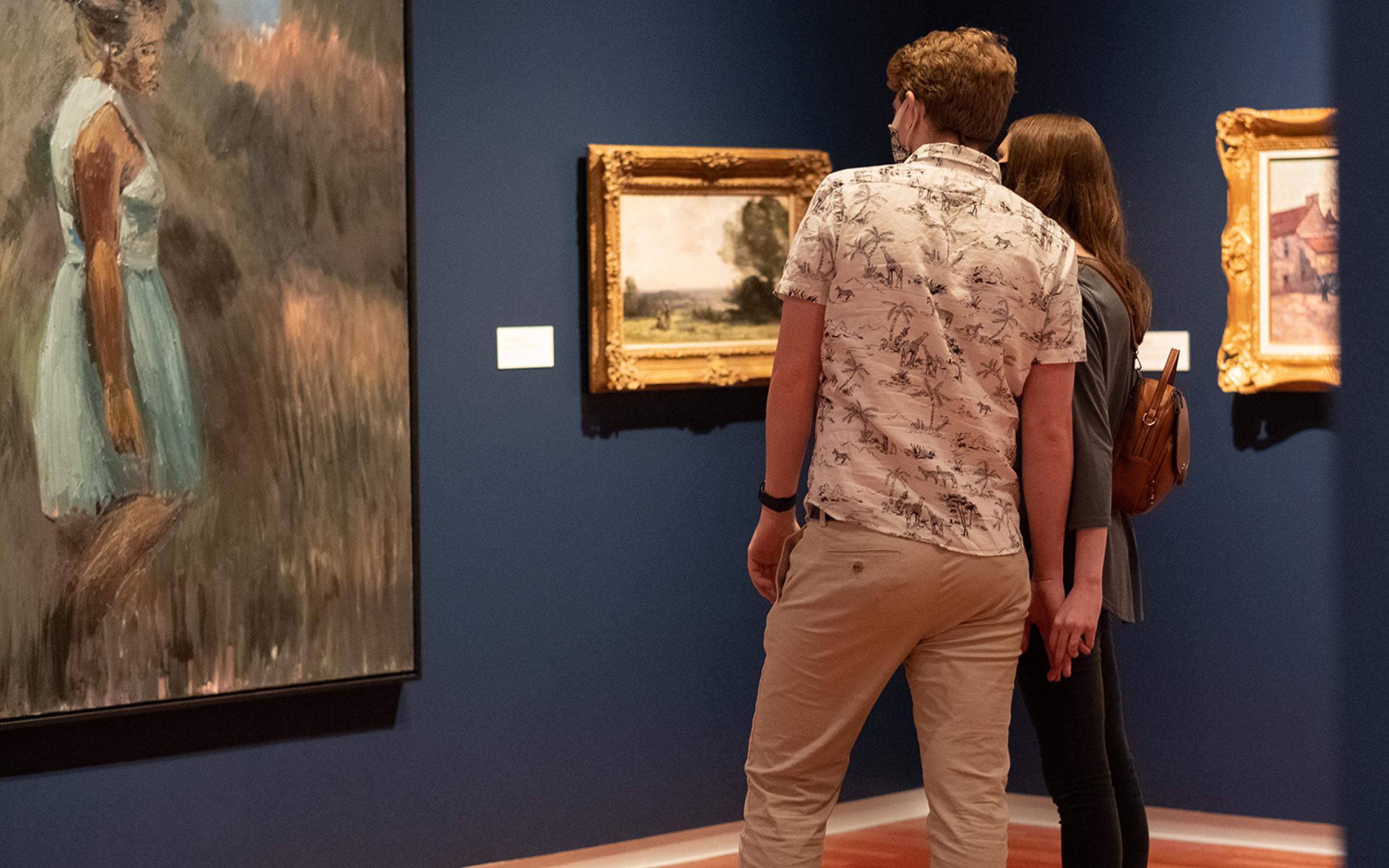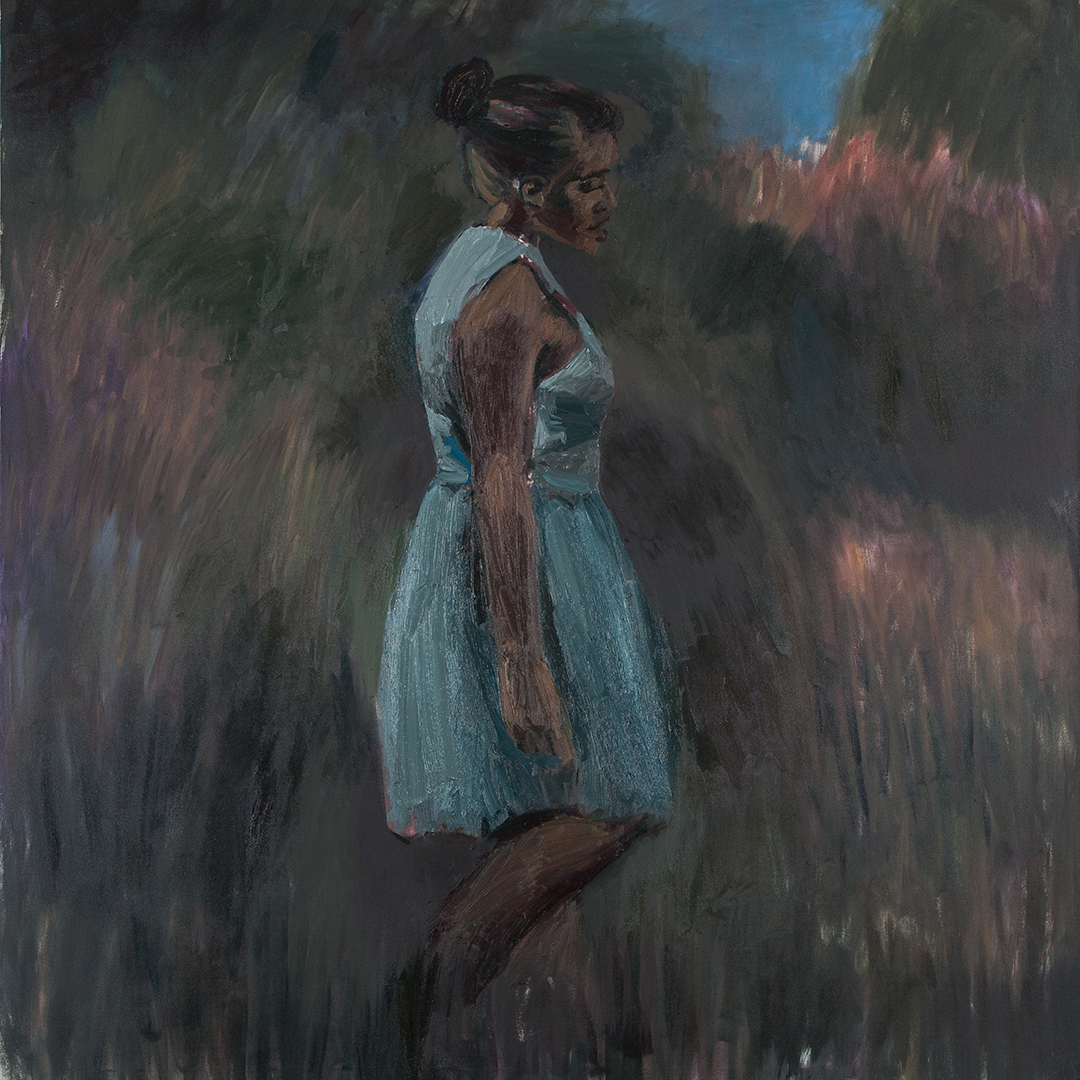
By Sabita Bastakoti, University of Utah student and curatorial intern
and Whitney Tassie, senior curator
This spring UMFA staff installed a special contemporary work in the European galleries—the oil painting Periphery (2013) by the British artist Lynette Yiadom-Boakye. Originally commissioned for the artist’s salt exhibition at the UMFA, the painting has since been hanging among the contemporary collection, but it’s time to examine it in a new context.

Yiadom-Boakye was greatly inspired by her European predecessors, particularly by the techniques of nineteenth-century French painters. Like her predecessors, Yiadom-Boakye’s brushwork expresses the essence of her subjects rather than depicting anatomical realism. By co-opting that visual language to represent Black figures, Yiadom-Boakye, who is of Ghanaian descent, draws our attention to the relative absence of Black figures in historical European art.
Unlike traditional European portraiture, which tends to convey status and authority through clothing and surroundings, Yiadom-Boakye’s paintings typically omit the visual cues that might hint at the social and economic status of her figures. In fact, Yiadom-Boakye’s subjects are not depictions of real people. Instead, her Black figures, depicted in indistinct settings wearing generic clothing doing everyday activities, embody the universal. They could occupy any space.
The UMFA welcomes this addition to its European galleries, which have very few works by women and no works by artists of African descent—a reflection of gaps in institutional collecting as well as historical racial and gender injustices that have impacted artistic production.
